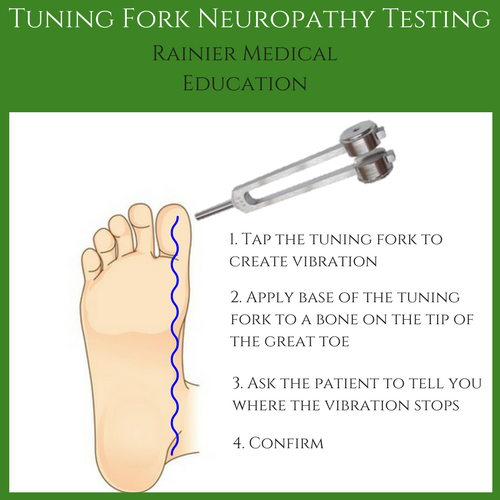

The degree of CHL needed to change the Rinne test result is frequency specific, and it is more successfully performed with a 512 Hz tuning fork. In the case of CHL with a greater degree of loss, AC will be worse than BC, and the Rinne test is said to be negative (BC < AC). If the subject hears the signal emitted from the vibrating fork it means the AC signal transmission is better than the BC, and thus the interpretation is Positive Rinne with presumed CHL. The tuning fork is then held 3–4 cm adjacent to external auditory canal. It is traditionally performed by placing the vibrating tuning fork on the mastoid process until the subject cannot hear the sound due to vibration decay (BC threshold). The Rinne test is a bedside examination that compares the two thresholds, and it is used to detect a conductive hearing loss (CHL). The air conduction (AC) threshold is lower than the bone conduction (BC) threshold when the audiologic pathway is intact. The validity of patient-operated smartphone-based Rinne test awaits further study. ConclusionĪ smartphone-based Rinne test was validated for the detection of an air–bone gap ≥ 25 dB at 512 Hz in the clinical setting. The smartphone-based Rinne could not evaluate two patients with a moderately severe/severe sensorineural hearing loss due to their inability to detect the vibrations. The smartphone-based Rinne test could correctly discriminate between patients with an air–bone gap ≥ 25 dB at 512 Hz from patients with a lower or no air–bone gap at 512 Hz.

The Sensitivity was 85% for both tests, specificity was 90% and 93% for smartphone and tuning fork tests, respectively. The overall agreement between the traditional Rinne test and the smartphone-based test was 98%.

The test results were compared to those of formal audiometry. Each participant underwent the traditional 512 Hz tuning fork-based Rinne test, as well as a smartphone-based Rinne test by means of a single uncovered smartphone with a vibration application. Twenty consecutive patients hospitalized in the otolaryngology department of a tertiary medical center due to unilateral hearing loss (HL study group), and 30 consecutive inpatients on the same ward who had no otological history (controls) were enrolled. The presence of clenched teeth during the “tonic spell” should raise suspicion for pseudoseizure.To validate a smartphone-based Rinne test employing the vibration application of mobile telephones. 20 The mouth is usually wide open during the tonic phase of a generalized epileptic convulsion. 19 Lateral tongue biting and scarring are more suggestive of epileptic seizures, whereas biting on the tip of the tongue suggests pseudoseizures. The number does not differ significantly from that in patients with epileptic seizures. Bladder incontinence and tongue biting are not exclusive to epileptic seizures, since they occur separately or together in about one half of EEG-proven pseudoseizures.
TUNING FORK TEST WAS POSITIVE SKIN
Skin burns (that occur while cooking, for example) during seizures may have greater diagnostic significance as they occur in one third of epileptic seizures but not in pseudoseizures. However, patients with pseudoseizures usually lower themselves gradually to the ground to avoid injuries. While such injuries remain more common in epilepsy, they also occur in pseudoseizures as a reflection of self-destructive behavior. The traditional wisdom that self-injury during a seizure excludes a psychogenic etiology is not always true. 10 Psychogenic pain syndromes (e.g., somatoform pain disorder) 11 will only be discussed in the context of other pseudoneurologic syndromes.

8, 9 Factitious disorder is a conscious fabrication of disease for personal gain. Symptoms occur mostly in adolescent or young adult women from socioeconomically deprived backgrounds. 8 Like somatization disorder, conversion disorder is nonvolitional but presents with the sudden onset of single, usually nonpainful symptoms that are precipitated by stress. 7 Somatization disorder and conversion disorder are subconscious expressions of psychologic stress in the form of somatic complaints.
TUNING FORK TEST WAS POSITIVE MANUAL
The psychiatric profile of patients with pseudoneurologic syndrome can be categorized using the classification of the somatoform disorders (somatization disorder, conversion disorder, psychogenic pain disorder, hypochondriasis and undifferentiated somatoform disorders) and factitious disorder given in the Diagnostic and Statistical Manual of Mental Disorders (DSM-IV).


 0 kommentar(er)
0 kommentar(er)
